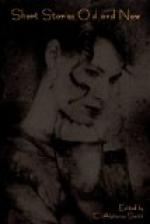Plot. The plan of the story is as simple and beautiful as the teaching is profound and helpful. “Mr. Hawthorne,” writes Mrs. Hawthorne, “says he is rather ashamed of the mechanical structure of the story, the moral being so plain and manifest.” But what is the “plain and manifest” moral that the structure of the story is designed to bring out? One interpreter says, “That the last shall be first”; another, “That success is not to be measured by human standards.” The central thought seems to me to be larger than either of these and to include both. It is rather the assimilative power of a lofty ideal and is best phrased in 2 Corinthians iii, 18: “But we all, with open face beholding as in a glass the glory of the Lord, are changed into the same image from glory to glory.” By setting his ideal high and by looking and longing, Ernest grew daily in spiritual stature and was saved from being the victim of the popular and passing allurements of war, money, and politics, allurements to which his neighbors succumbed because they did not live in vital communion with the Great Stone Face. The poet, it is true, felt the appeal of the Great Stone Face but only afar off, for his life did not correspond with his thought. It is one of the finest touches in the story that, though Ernest meets the double requirement of thought and act, he still hoped “that some wiser and better man than himself would by and by appear.” If a man once catches up with his ideal, it ceases to be an ideal. Ernest did not think that he had attained.
Characters. Ernest, like Scrooge, is a developing character. He did not have as far to go as Scrooge and his development was differently wrought; but both passed from weakness to strength and from isolation to service, the one through the ministry of a single profound experience, the other through the constant challenge of a high ideal. The other characters fall below Ernest because they did not relate themselves as whole-heartedly to the influence of the Great Stone Face. Mr. Gathergold, type of the merely rich man, Old Blood-and-Thunder, type of the merely military hero, Old Stony Phiz, type of the merely eloquent statesman, the easily satisfied people, type of the fickle crowd, and at last the gifted poet, type of the discord between words and works, all were natives of the same valley of opportunity. But the Great Stone Face was the measure of their defect rather than the means of their attainment because, unlike Esther and Scrooge and Ernest, they were “disobedient unto the heavenly vision.”]
One afternoon, when the sun was going down, a mother and her little boy sat at the door of their cottage, talking about the Great Stone Face. They had but to lift their eyes, and there it was plainly to be seen, though miles away, with the sunshine brightening all its features.
And what was the Great Stone Face?




